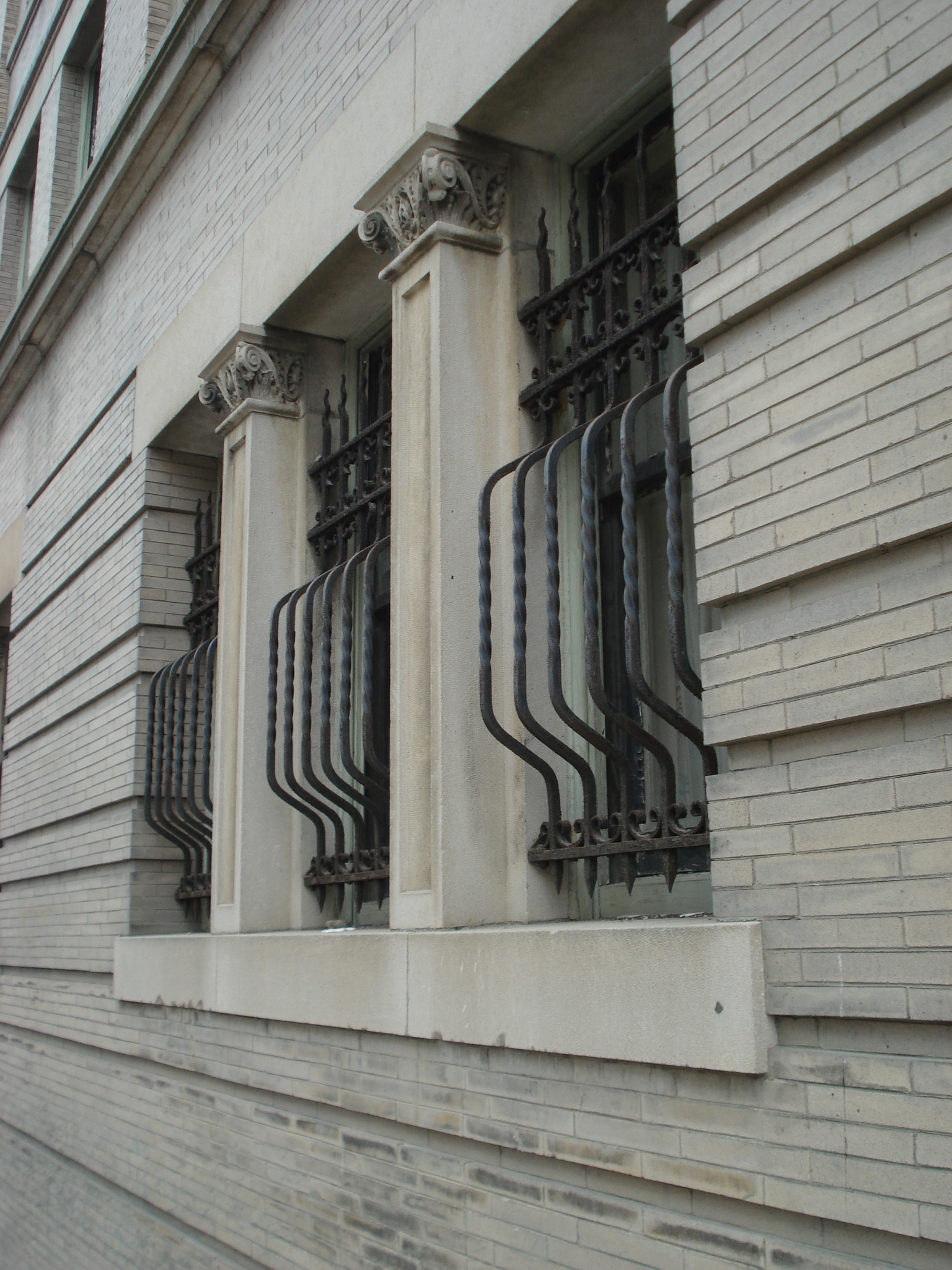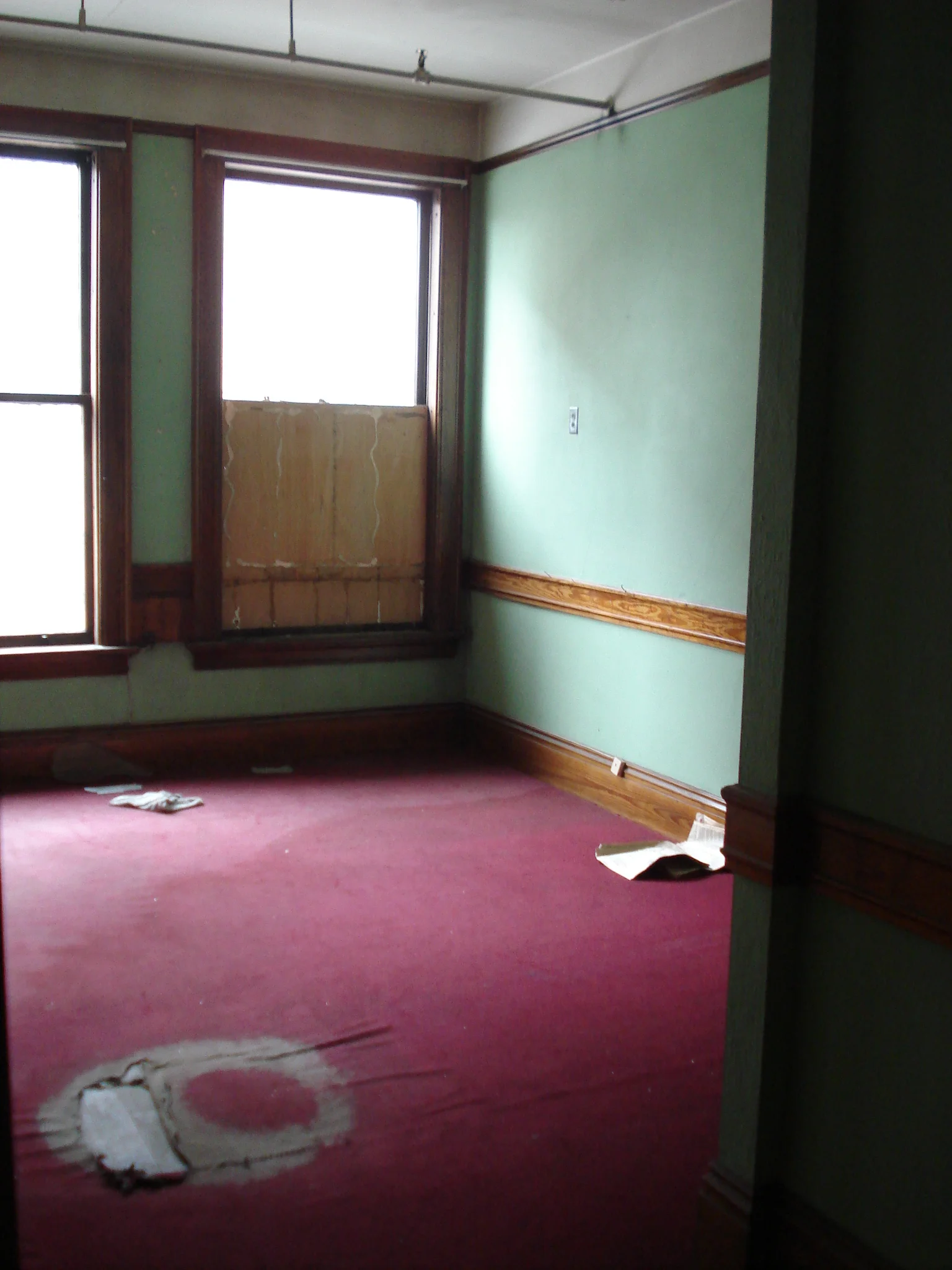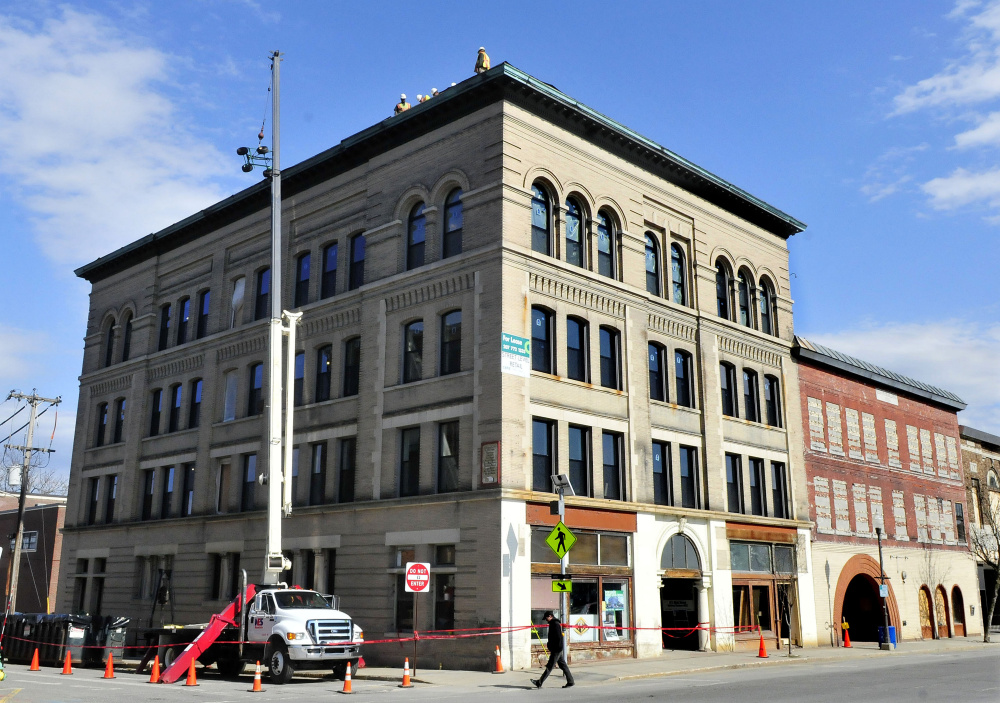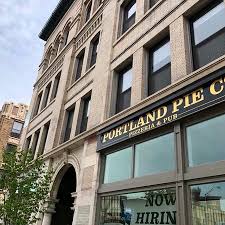






At the turn of the 20th century the Waterville Savings Bank had become the financial core of a blossoming downtown community. In 1902, according to The Centennial History of Waterville, the bank was the city’s largest savings depository, with $1.2 million in accounts. Its architect William H. Butterfield, according to Earle Shettleworth: “was a native of Sidney, Maine, who moved to Waterville at age eleven. In 1881 Butterfield established an architectural firm in Manchester, New Hampshire, from which he conducted a life-long architectural practice that covered the New England states. His early ties to Waterville led to his designing at least ten major buildings there in the first decade of the twentieth century.” The reinforced concrete floors and gray brick and limestone exterior sought to guarantee the building as fireproof. Indeed, its appearance suggests that the bank’s goal was to have its headquarters look permanent and secure. During the Great Depression in 1939, the bank moved across the street to a larger block.
The four-story landmark retains a variety of architectural details that make the building highly significant. The storefront level’s façade is divided by a large arched entryway with flanking shop windows. On the fourth story, an arcade of arched windows adds heft to the upper level. Several cornice lines, lintels, and quoins add texture and profile variation on the façades (the block sits on the corner of Main and Appleton). The largely intact interior woodwork and layout also contribute to this significance.
After fifteen years of vacancy, the building is threatened by neglect and damage from a leaking roof. The owner has shut off water and electrical services to the building, making the fireproof design vulnerable. Because the building is privately owned, options for reuse and preservation are limited.
A group of supporters wish to see it preserved in a method that benefits downtown Waterville, though current costs exceed expected returns. More recently, conversations between the owner and Downtown Waterville focus on other options for making the property available so that immediate structural work can commence.
Downtown Waterville is a proponent of the building’s preservation, along with Maine Preservation and Maine Historic Preservation Commission. Of many buildings in Waterville, this historically and architecturally significant structure remains and important key to the continued successful revitalization of the city. The former Waterville Savings Bank building represents two key citizens in Waterville’s affluent rise, but its iconic Romanesque architecture and valuable location can, with a creative reuse strategy and help from partners, continue to symbolize the city’s resurgence as an economic engine of Central Maine.

